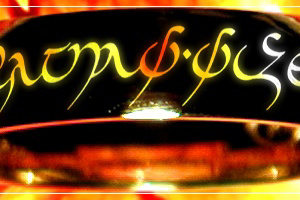Pfeffer Mediæval Font

About Pfeffer Mediæval Font
Pfeffer Mediæval Font is a Runic font and was created on . Since then, it has been downloaded 8,775 times and added to 213 collections. 13 people have liked Pfeffer Mediæval Font and given it a thumbs up.
Pfeffer Mediæval Font was recently updated on Feb 3, 2022
Regular Style

More info from Robert Pfeffer
FEFFER MEDIÆVAL is the idealized image of a Carolingian minuscule, the script of Charlemagne, on which our modern Antiqua has been modeled.
Charlemagne
In the young kingdoms that had been founded on formerly Roman territory during the migration period, several so-called Post-Roman scripts emerged up to the 8th century. These were already minuscule scripts using ascenders and descenders. Although all of them were derived from uncial, half-uncial and new Roman cursive, they differed quite a lot regionally. Moreover, they were difficult to read, not least due to their extensive use of ligatures. Beginning from the end of the 8th century a standardization took place in the course of the Carolingian Renaissance. Advocated by Charlemagne and with important collaboration of Alcuin of York—who had responded to a call to Charlemagne’s palace school in Aachen—an easy to read script was developed that, beginning from the 9th century, quickly spread across the Frankish scriptoria. This Carolingian minuscule became the common book and administrative script in the Carolingian empire and all over western Europe except Ireland, until it was in turn replaced by the Gothic minuscule script.
In England, where the new script took a very belated foothold, the insular minuscule script (one of the above mentioned Post-Roman scripts) was in coeval use up to the 12th century. This insular hand script primarily differs from the continental one in the shape of a few letters.
Character set of Pfeffer Mediæval
Being my most extensive font as yet, Pfeffer Mediæval contains more than 800 glyphs the whole of which cannot be displayed here. The Latin range includes numerous accented letters and additional characters for purposes of medieval philology. As far as the coverage reaches, the character mapping follows the recommendations of the Medieval Unicode Font Initiative. Among those additional characters are several insular variants of Latin letters, rendering Pfeffer Mediæval suitable for the display of Old English texts as well.
Finally, this font also encompasses a Gothic and a Runic character set.
Source: http://www.robert-pfeffer.net/schriftarten/englisch/





